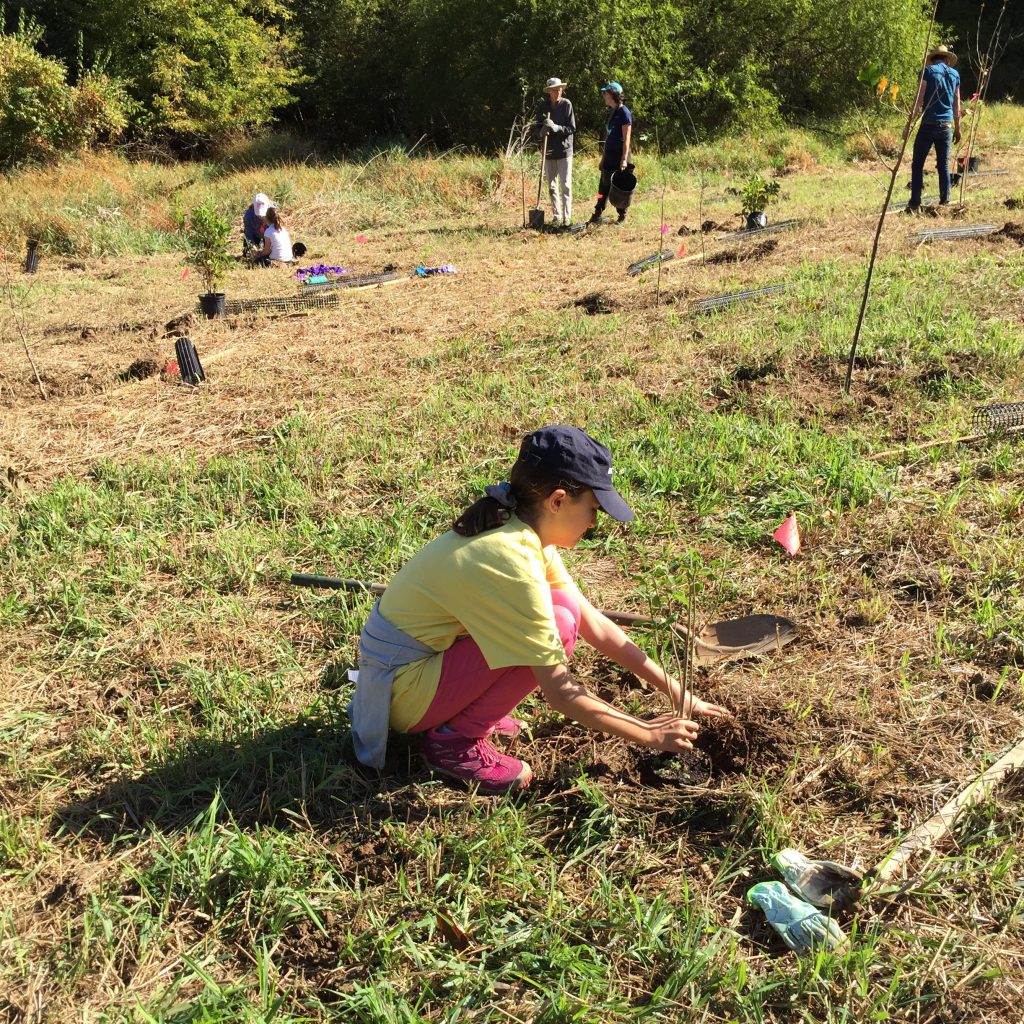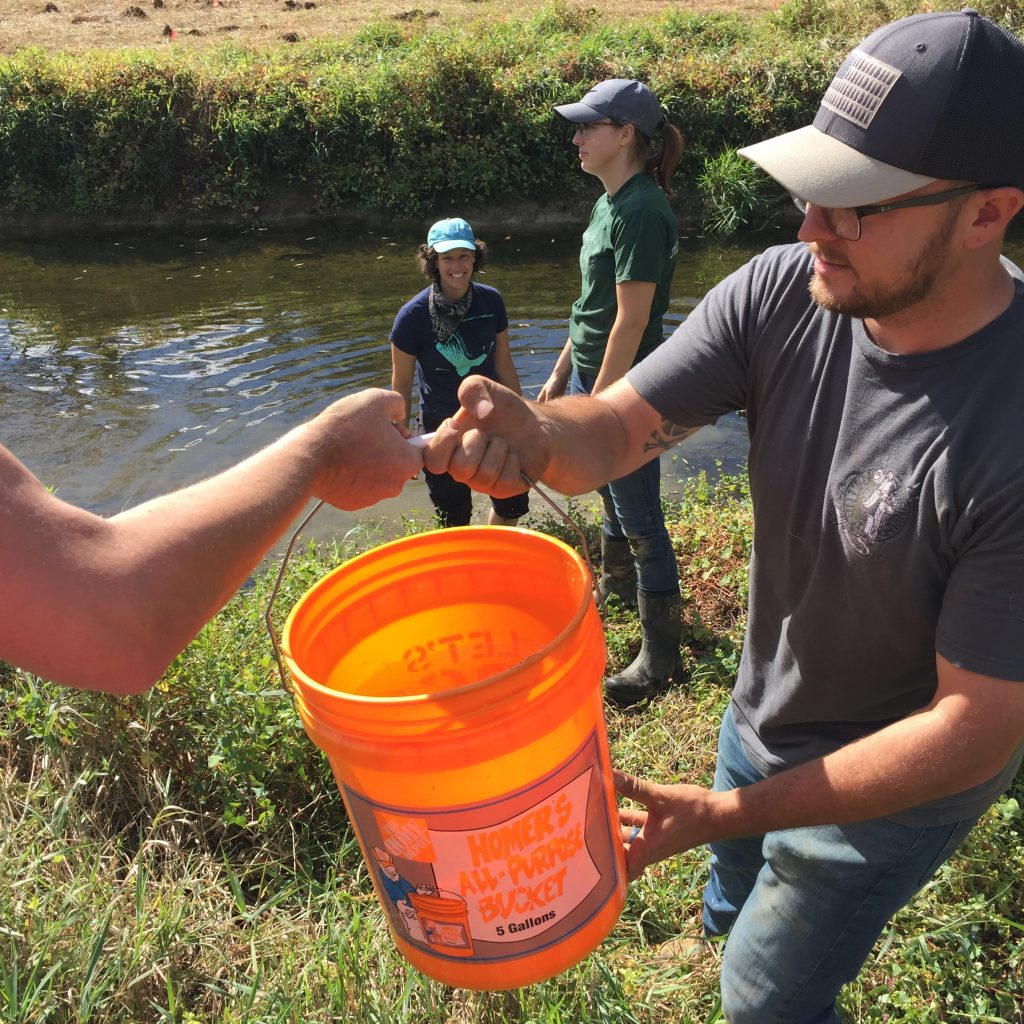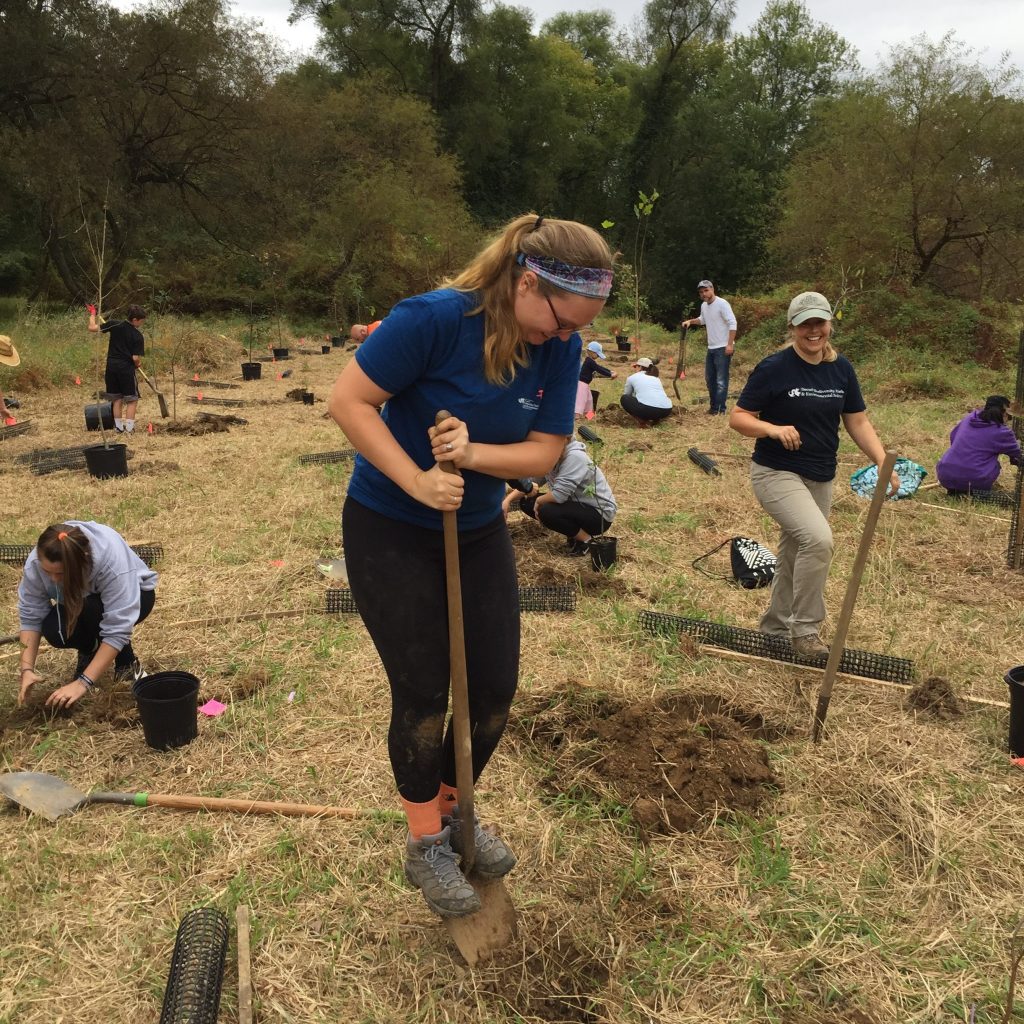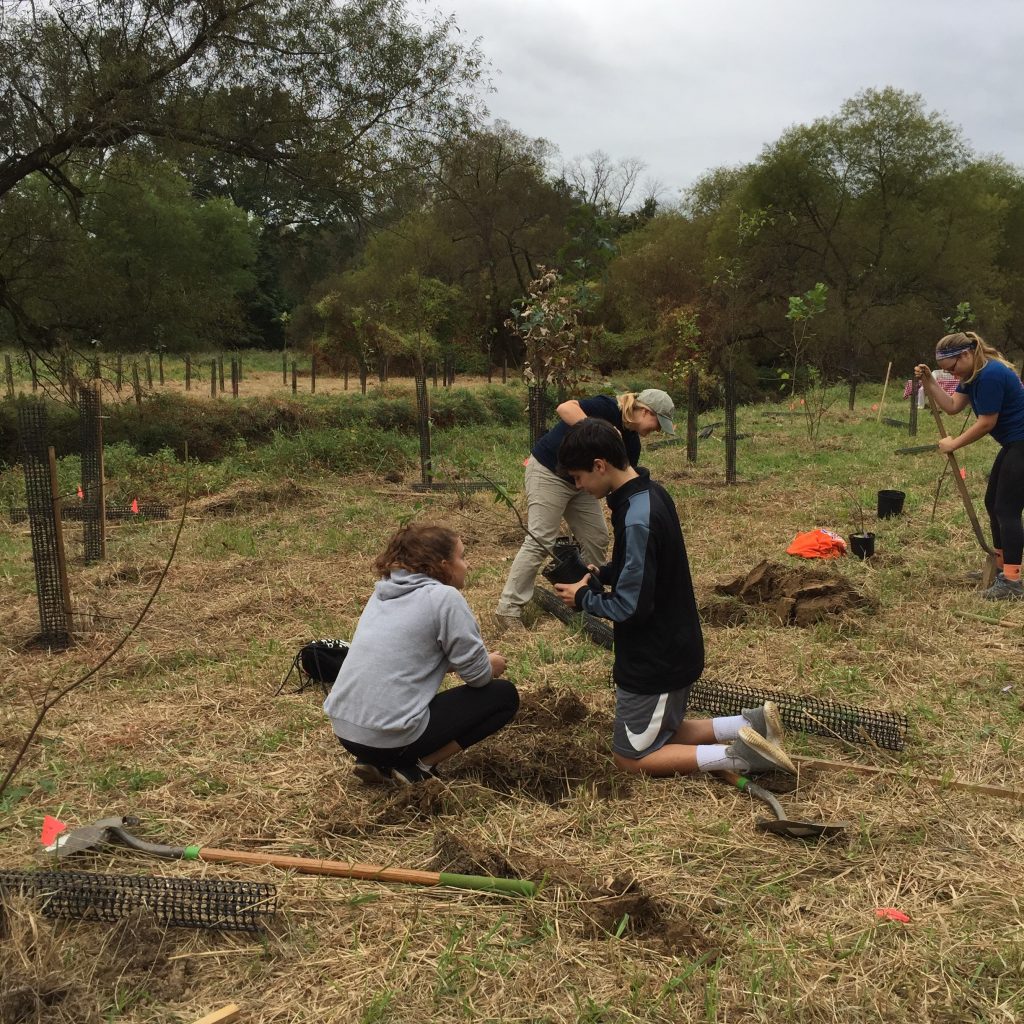Watch this video webinar of Lauren McGrath, Director of Watershed Protection, to learn more about the secrets of stream insects and the stories they tell. Macroinvertebrates are the insects that live in our waterways, and can inform us about water conditions throughout the year. Learn more about these fascinating insects, their adaptations, and how they can influence restoration practices. Presented on April 16, 2020 hosted by Darby Creek Valley Association.
Meet Our Newest Watershed Team Members
The Watershed Protection Program is thrilled to introduce the newest members of our team: Evan Hunt, Jules Smith and Zack Smith. Evan is a Conservation Associate working through October 2020 and Jules and Zack are Co-op students from Drexel University through September 2020. “All three individuals are talented and passionate about conservation and water, and are excellent additions to the Trust family,” shared Lauren McGrath, Director of Watershed Protection.
Read on as these new watershed staff members introduce themselves.
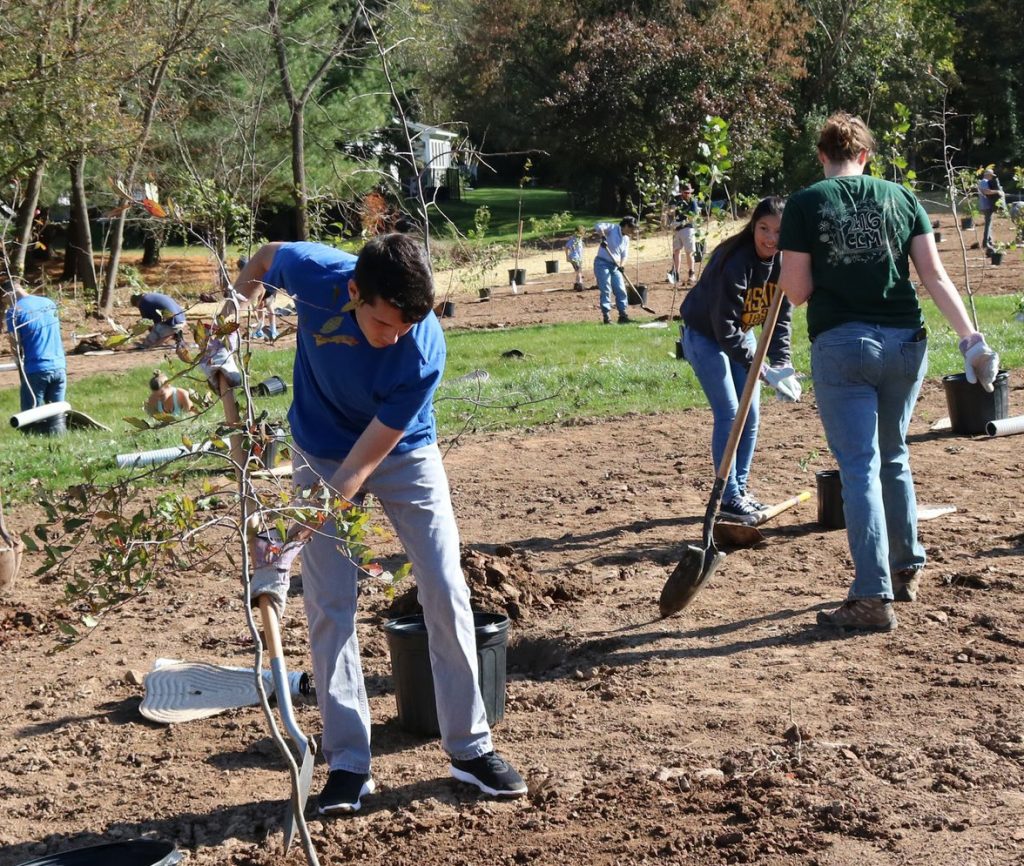
He is our newest Conservation Associate in the Trust’s Watershed Program.
Evan Hunt
In 2018 I received a Bachelor’s degree from Ursinus College where I majored in Environmental Studies and conducted research on peoples’ connection to urban forests. Through this work I began to greatly value the social and humanistic aspect of land management. Soon after graduating, I started working for an ecological restoration company on large large-scale projects throughout Pennsylvania and New York. Later I served as the nursery assistant at a native plant nursery where I became well versed in the growth habits of trees and herbaceous plants native to the Mid-Atlantic region. I also advised clients on projects ranging from riparian buffer restorations to home garden installations.
I first got involved at the Trust as a volunteer, assisting the watershed program with various land stewardship projects. Now as the conservation associate I have taken on a larger role in implementing riparian restoration projects and monitoring water quality throughout the watershed.
In my current position I hopes to draw from these experiences to further enhance not only the ecological value, but also the social appeal of the waterways and preserves throughout Willistown. Outside of the Trust, I am an active volunteer with my local Tree Tenders group and spends my free time in the garden.
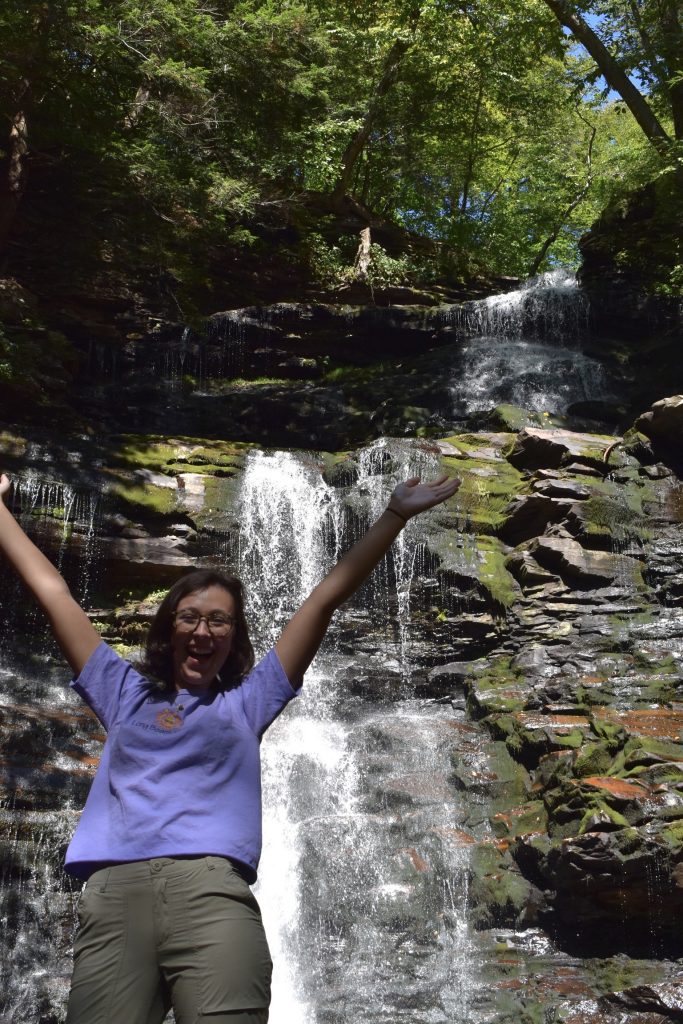
Jules Smith
My name is Jules Smith and I am a rising senior at Drexel University. At Drexel I study environmental science and biology. My personal interests include conservation biology and aquatic systems which made Willistown Conservation Trust my ideal co-op.
On campus I am in charge of a conservation genetics project under the guidance of Dr. Dane Ward. The project is studying potential inbreeding dynamics in the Northern Pine Snake (Pituophis melanoleucus) through microsatellite DNA analysis.
My previous two co-ops were both in the world of water. The first being at the Philadelphia Water Department (PWD) and the second at Aqua America. At PWD I worked as an aquatic biology laboratory analyst. I was involved in the testing of drinking and wastewater for a variety of coliforms and other bacteria. At Aqua I was able to expand my knowledge and skill set beyond the lab space. I was a part of the “Treatment Team” and was heavily involved in research regarding the removal of PFAS from drinking water. I was additionally tasked with organizing and analyzing chemical data for dozens of sites across Southeast Pennsylvania. These two experiences gave me a strong background in state regulations and water chemistry.
I am very excited to get started working with the Trust as I think this is the perfect opportunity to take my prior experiences with water and pair them with my passion for conservation.
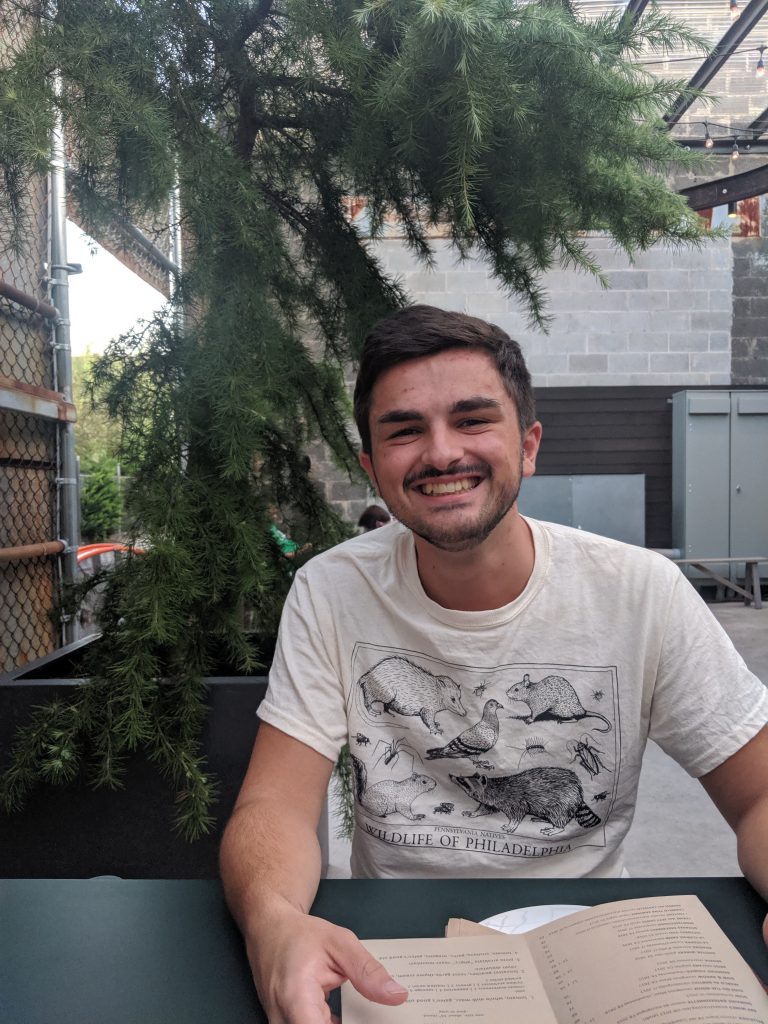
Zack Smith
Originally from Clarks Summit Pennsylvania, I am a pre-junior environmental science major at Drexel University. At school, I am involved in Dr. Dane Ward’s research lab where our goal is to assess potential differences in biofouling communities across Barnegat Bay, as well as across different temperature regimes in the lab. Aside from research, I am also a board member of our Sierra Club and Coffee Club, which are both aligned with two of my biggest hobbies – sustainable living and coffee.
I’ve worked in a few different areas of environmental science in the past. Before starting college, I was an intern at Lacawac Sanctuary and Field Station in Northeast Pennsylvania. During my time there I worked alongside limnologists where we collected and processed lake water samples from across the region. I even spent a few weeks building a brand-new hiking trail that brought visitors to parts of the property they couldn’t access before. Once at Drexel, I was a member of the STAR program (Students Tackling Advanced Research) in Cienfuegos Cuba, where I was part of a collaborative team that studied the ecology, morphology, and biology of Melipona beecheii honeybees at 3 different bee farms in the province. Most recently, I was a co-op at the Philadelphia Water Department’s Compliance Assurance team where I spent most of my time constructing reports the Green Cities, Clean Waters program’s progress.
I picked Willistown Conservation Trust’s Watershed Protection Program for my second co-op because of the fantastic opportunity to study the headwater streams in the Trust’s focal area and the self-guided research aspect that allows the co-ops to dive deeper into an area of interest. Growing up, I spent a lot of time on my local nature conservancy’s land both biking and hiking. Seeing that the Trust has the same goals of land and water preservation, I was immediately drawn in. From the welcoming environment to the ample opportunity to get in the field, I knew Willistown Conservation Trust was somewhere I wanted to be.
12.7 More Acres Conserved Forever
The map of permanently conserved land in the Willistown area just got a little greener, thanks to Lawrie Harris. Lawrie donated a Legacy Conservation Easement to the Trust on November 11, 2019, protecting her 12.7 acres on Twinbrook Road from development forever. Located on Twinbrook Road in Easttown Township, in what is known as the Leopard Tract, the gently sloping site is primarily wooded and features a small tributary to Crum Creek named Grubb Mill Run. Several acres of open meadow area surrounds Lawrie’s home and garage, the only structures on the property.
The easement will limit further subdivision of the property and will protect its natural features that serve as important wildlife habitat, support the surrounding ecosystem and contribute to scenic views along Twinbrook Road. The easement defines most of the property as Sensitive Riparian Area, which include wetlands, hydric soils and floodplain, and limits the amount of disturbance allowed in these areas.
Lawrie shares her late husband Jay’s passion for the environment, and wants to conserve the land to ensure it will stay just as it is today, so both people and wildlife can enjoy it forever. Her decision to donate the easement was prompted, in part, by neighbors Kate and Ben Etherington’s recent decision to do the same. We are grateful to Lawrie for her foresight and generosity.
“I want to be absolutely certain that future owners will keep this property intact and take care of the stream and woodland. We don’t have many places like this left and we need to preserve them,” said Lawrie. “And the process of working with the Trust has been easy and enjoyable. Willistown Conservation Trust has a 40-year legacy of protecting land in our area.”
When you look at a the Trust’s protected lands map, you see a mosaic of open space comprising preserved parcels of all sizes – from hundreds of acres to just a few. And in an era when conserving habitat, protecting the quality of our water supply, and offsetting the impact of human activity is so vital, every acre counts.
We developed Legacy Easements, like the one that protects Lawrie’s land, specifically so owners of smaller parcels of land could protect their land in perpetuity. Legacy Easements are generally less complicated than traditional ones and can be tailored to protect features of an owner’s property that are personally and/or environmentally significant.
Thank you Lawrie, another hero of our countryside!
Volunteers Plant 300 Trees To Improve Ridley Creek Watershed
As the sun rose over the meadow that was formerly Ashbridge Lake on October 4, the first of our three days of tree planting, I stood and surveyed the planting area that was soon to be home to 300 trees and shrubs and felt a sense of excitement (and some stress) for the event that was about to take place. Months of effort and planning had gone into making sure the next three days were to go smoothly. Now, as I stand at the edge of the meadow and gaze at all of the beautifully planted and caged trees I have only one feeling: gratitude. I was recently taught my first Lenape word: Wanishi (“Wah-ni’-shee”), which is a profession of gratefulness. Used to start every meeting, it feels appropriate to start this post of appreciation for all of the effort that went into this project.
Thank you to each and every volunteer who came out over the course of the summer to help prepare the planting site –from weedwacking and digging holes, to planting, caging and watering the trees. A major thank you to Mother Nature, who was thoughtful enough to break the drought with a gentle rain the day before the planting was due to take place, which made life much easier for the group of hunters who had volunteered to assist yours truly in digging holes for the trees.
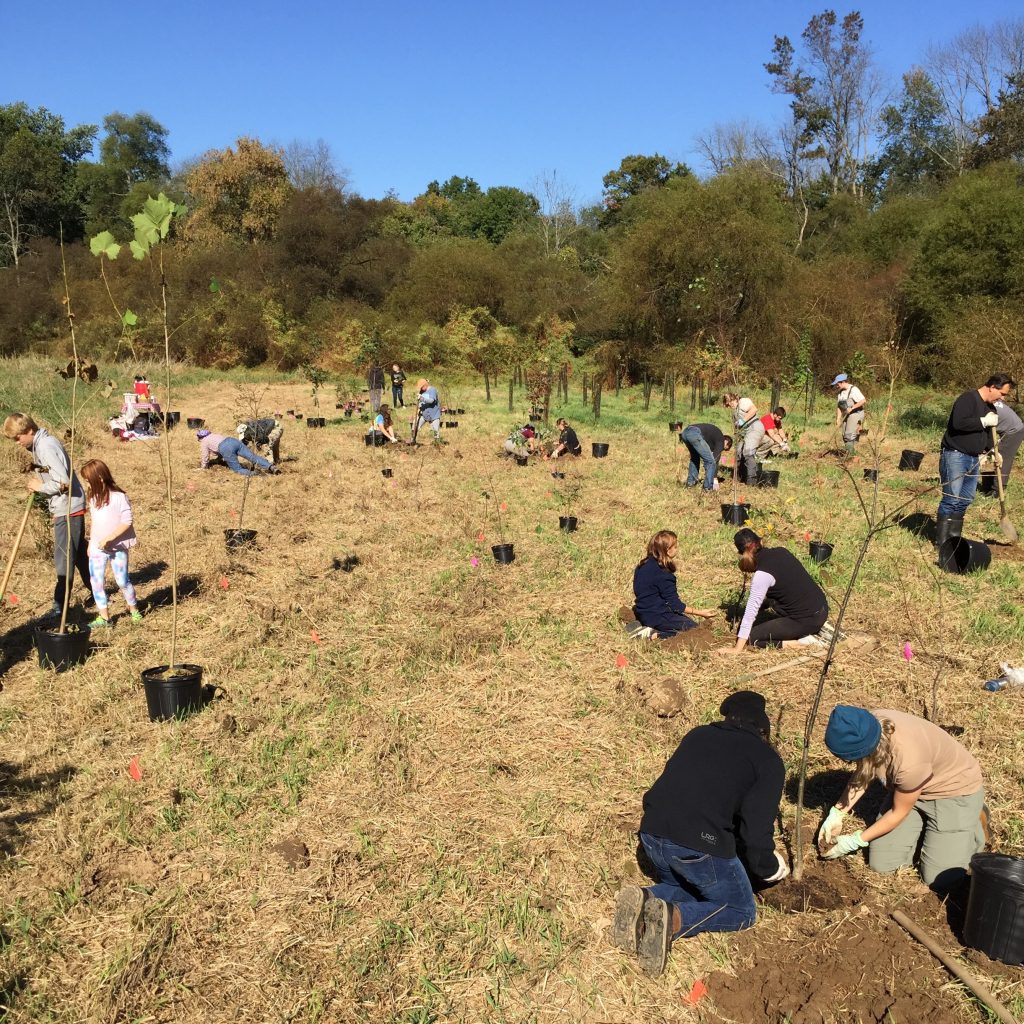
Each planting day was cool, clear, and perfect for all of the labor that took place. Over 60 incredible volunteers came out over the course of three planting days – families, individual volunteers, friends, coworkers – each day was filled with laugher as friends, old and new, bonded over planting new life into the meadow. Our fabulous Watershed team was reunited, as past interns and Drexel co-op students returned with friends; enthusiastic freshmen in the Drexel University Biodiversity, Earth and Environmental Sciences (BEES) program came out with their fearless leader and professor Dr. Marie Kurz; a local scout family came to work hard; Tree Tenders from Goshen and elsewhere leant their expertise and guidance. Two teachers from Kennett Square school district came out – neither of which knew the other had signed up! Rain began to fall as the final cages were being placed around the trees, saving us from hauling buckets of water to our new plants.
We could not have done this vital work without the hard work of every single volunteer. Your effort is helping to improve the habitat both on the stream banks and in the channel. As the roots of each tree grow into the soil, they will stabilize the sediment and slow the rate of erosion. Over the coming years, the canopy will spread and begin to shade the stream and keep the water cool. The impact of each tree will improve the water quality in our watershed, and we are excited to monitor the changes that take place over the next several decades. Already, I am starting to see an improvement to the ecological value of this meadow (before it was filled with invasive canary reed grass and mile-a-minute vine and inhabited by a stunning number of non-native Chinese praying mantis). In the areas that we have cleared since the spring, we are seeing native sedges begin to appear and an increase of butterflies using the area. I have been observing the wildlife starting to use the space – birds now move in each morning, hopping from tree to tree and exploring the new habitat. As the birds learn, so do the deer, but the cages that were placed around the trees by volunteers should help to keep them safe from the curious white tails.
The next time you’re talking a walk through Ashbridge Preserve, please take a moment to pause in the planting site. I hope you feel the same way I do as you look at trees growing in the meadow. We’re already planning the next round of planting, so please watch for announcements if you want to join us! Also, take a look at the time lapse video we shot over the tree days.
Of course, none of this would have been possible without the generous funding provided by the Pennsylvania Department of Conservation and Natural Resources and TreeVitalize. A special thank-you goes to REI. As if the joy of planting trees was not enough, they donated amazing door prizes to raffle off to a lucky volunteer each day!

Variety is the Essence of Life
The old saying goes that variety is the spice of life. In nature, variety is the very essence of life.
Hopefully you’ve read and enjoyed our recent blog posts about the importance of riparian buffers and tips for planting trees and shrubs, if you haven’t yet please take a look. You’ll find helpful guidance, which will be handy for World Planting Day coming up on October 22!
An important aspect of healthy riparian buffer is planting a variety of species, which will help support a variety of insects, animals, bacteria, fungi and other living things. A variety also looks nice, providing different colors and textures in your landscape.
To help you, we’ve assembled a collection of our favorite native trees and shrubs that grow well in riparian buffers.
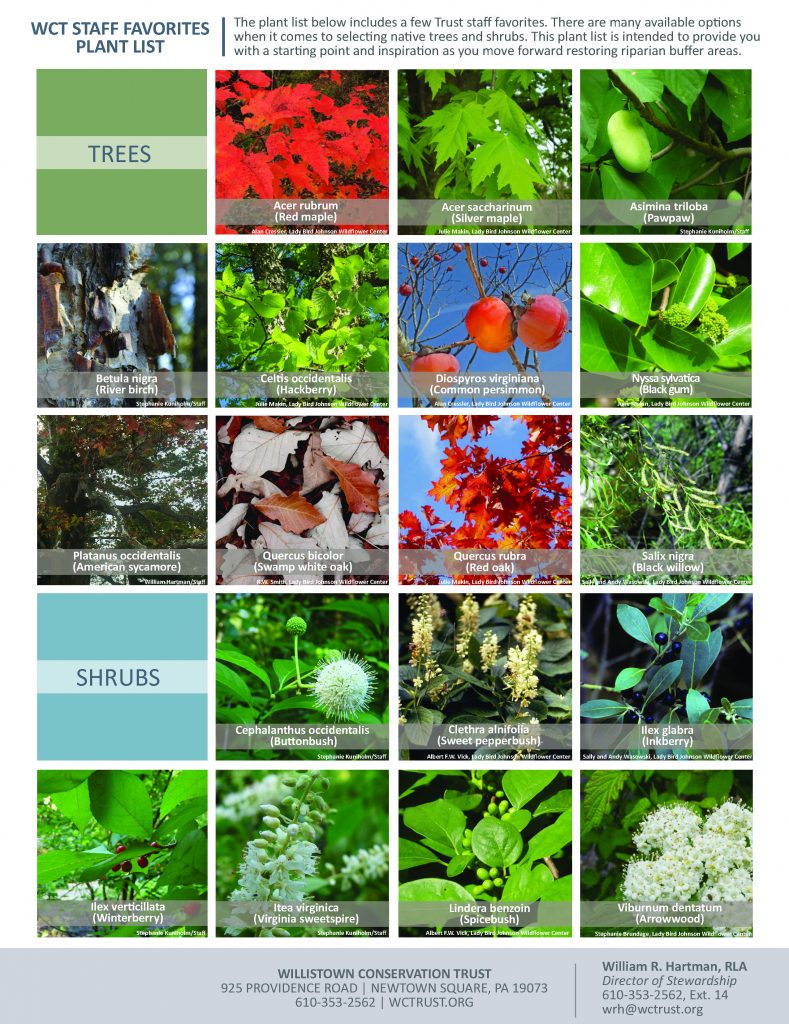
You can also download a PDF here for future reference.
For detailed information about each of these, you can consult wildflower.org. You can also talk with a reputable native plant nursery or landscape designer about what variety of plants to select for your particular area.
- « Previous Page
- 1
- …
- 9
- 10
- 11
- 12
- 13
- 14
- Next Page »
